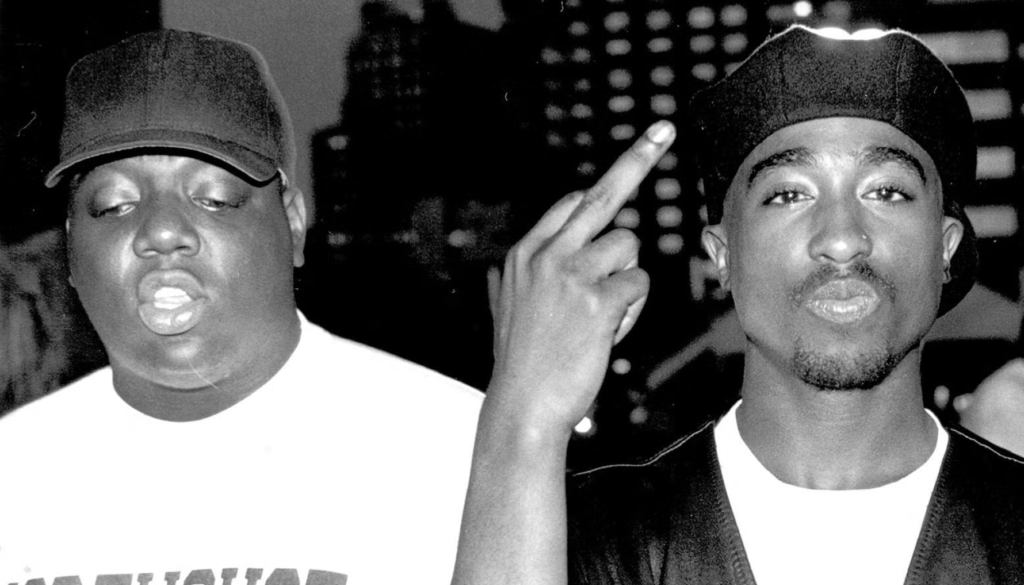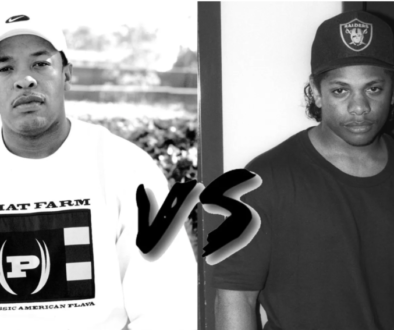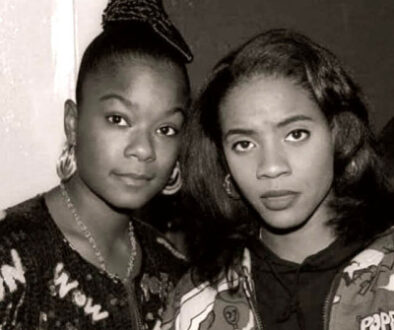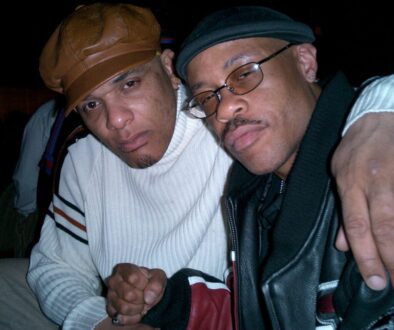Tupac vs. Biggie: The Feud That Shook Hip-Hop to Its Core
In the annals of hip-hop history, no rivalry looms larger or more tragically than the epic feud between Tupac Shakur and The Notorious B.I.G. What started as a friendship between two of the most gifted rappers of their generation quickly spiraled into a bitter, coast-to-coast war of words, diss tracks, and ultimately, violence. This feud didn’t just pit two men against each other; it ignited a cultural firestorm that engulfed the entire hip-hop community, leaving a legacy that still resonates today.
From Friends to Foes
The Tupac and Biggie story is the stuff of hip-hop legend. Once upon a time, these two giants of rap were friends, sharing stages, studios, and mutual respect. Tupac, the charismatic and outspoken rebel from the West Coast, and Biggie, the laid-back lyrical genius from the East Coast, seemed like natural allies. But as the 90s unfolded, cracks began to appear in their relationship, fueled by industry politics, personal grievances, and a growing sense of rivalry.
The turning point came in 1994, when Tupac was shot multiple times in a New York recording studio lobby. Surviving the attack, Tupac immediately pointed fingers at Biggie and Sean “Diddy” Combs, accusing them of setting him up. Though both Biggie and Diddy vehemently denied any involvement, the damage was done. Trust was shattered, and what might have remained a private dispute was about to explode into the public sphere in a way that would forever change hip-hop.
Diss Tracks and Dirty Laundry
With the release of Tupac’s venomous diss track “Hit ‘Em Up” in 1996, the feud reached a boiling point. In the song, Tupac didn’t just attack Biggie’s credibility as a rapper; he made it personal, claiming to have slept with Biggie’s wife, Faith Evans, and insulting everything from Biggie’s crew to his style. The track was a declaration of war, dripping with anger and resentment, and it shook the hip-hop world to its core.
Biggie, known for his cool demeanor and smooth flow, took a more measured approach in his responses. Tracks like “Who Shot Ya?” were subtle yet pointed, with Biggie never outright naming Tupac but leaving little doubt about who his target was. The contrast between Tupac’s fiery aggression and Biggie’s calculated coolness only heightened the tension, drawing battle lines between East Coast and West Coast loyalists.
The Fallout: A Tragic End
As the feud escalated, so did the violence. What started as a war of words soon became something far more dangerous, with both sides surrounded by a toxic mix of gang affiliations, record label machinations, and media sensationalism. The East Coast-West Coast rivalry took on a life of its own, with fans and artists alike getting caught up in the hysteria.
The tragic climax came in 1996 and 1997, with the murders of Tupac and Biggie, respectively. Tupac was gunned down in a drive-by shooting in Las Vegas in September 1996, while Biggie met a similar fate in Los Angeles just six months later. Both cases remain officially unsolved, but the impact of their deaths was immediate and devastating. The hip-hop community was left reeling, mourning not just the loss of two of its brightest stars but also the toxic culture of violence and rivalry that had claimed their lives.
The Legacy: Lessons Learned?
The Tupac-Biggie feud stands as a cautionary tale about the dangers of unchecked egos, industry manipulation, and the blurred lines between art and life. It was a feud that started with music but ended with bloodshed, leaving a permanent scar on the hip-hop landscape. And yet, out of this tragedy came a renewed sense of responsibility within the industry, a recognition that the culture of beefs and diss tracks can have real, sometimes deadly, consequences.
Today, both Tupac and Biggie are revered as icons, their music celebrated for its brilliance and authenticity. But the shadow of their feud lingers, a reminder of the fine line between competition and conflict in the world of hip-hop. As the genre continues to evolve, the lessons of Tupac and Biggie’s rivalry remain more relevant than ever, a testament to the enduring power—and peril—of rap music.
In the end, the Tupac vs. Biggie feud wasn’t just about two men—it was about a culture at a crossroads, torn between realness and recklessness. And while the music lives on, the cautionary tale of their lives and deaths serves as a stark reminder of the price that sometimes comes with being the best.



